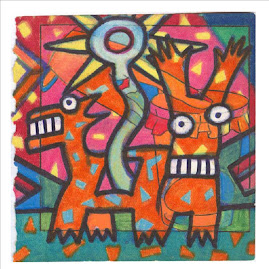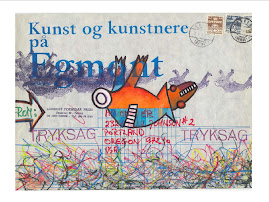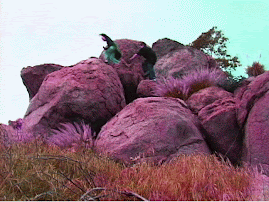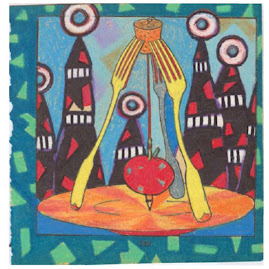This was originally published in Issue 9. To read the whole thing, check out our website at http://karawane.homestead.com.
I will be publishing more things that we have previously featured in the magazine to lead up to our deadline and hopefully inspire you all!
__________________________________________________
It began as a trickle; like the headwaters of the Mississippi from Lake Itasca in the Minnesota North Woods, it swells, it deepens and it varies in width like the river running south to the Gulf of Mexico. A Being in Motion was flowing much like a river and subject to, as a river is, changes in weather like the fury of hurricanes, the deluge of thunder storms and the imminent danger of water overflowing its banks. When rivers flood it’s considered a natural disaster and Adamas was realizing that this production held the potential for a cataclysmic destiny as well. As a director Adamas had spent his career managing disasters and he knew what he needed to do to keep this one from becoming a sight in shambles. He needed to reign everything in from where it was to a more controlled level of chaos and wrap it inside time units like television segments.
The production featured improvised music, dance, spoken word and projected images happening simultaneously, but this was not the flat surface of television, this was live multidimensional space. A video could be projected behind live performers and prerecorded audio could fill another part of the soundscape. Adamas talked with Keita and Jamila who were the directors of the house band about punctuating the show instead of filling it with music and they could see the benefits of abbreviations rather than blowing full out all the time. “Only fill the space if its empty” Adamas told them. “And there will be plenty of empty space, you dig?”
Aquanetta’s words kept passing through his brain, ”it’s the same story, everybody is telling the same story.” He could let go of his need to follow the story line or to employ a literal interpretation of the impressions expressed in the performance. He could let go of his need to understand how everything fit together and simply fit everything together. He remembered an event he produced in Birmingham, Alabama in recognition of the life of Malcolm X; nothing was working like he planned, everybody had a different concept, a different message, and a different truth to convey. For some the story was about Malcolm X: a minister for the Nation of Islam, for others it was a story about the prison education of Detroit Red and for still others it was the spiritual transformation of
El-Hajj Malik el-Shabazz. It was a grassroots people powered production and grassroots productions have the precariousness of passion and prevarication; no one knows what’s going to happen because no one is in control and the story changes constantly because stories are organisms.
Realizing that he was not in control was liberating and it allowed him to relax and go with the flow of an eclectic montage of independent happenings that Aquanetta called a show. From the first scene, which was an ensemble of dancers moving in front of a projection of a waving body of water to primal sounds of the waves lapping, slapping then human sounds of moaning and sighing and grunting with live instrumental music and poetry. It was too much and now he understood that was the point of it. Layers of meaning braided together was like his life, like the Mississippi, like the story, like the
show itself; everything happened simultaneously and without hard separations in-between.
Keita wouldn’t stop playing his instruments. He and Jamila set up camp downstage left and were working on something all through rehearsals. “Ya’ll just go on now, don’t mind us. We gon’ be playing all through this thang.” Then he put a horn in his mouth, looked at his wife, nodded and went on. This obsessive behavior inspired the dancers to move constantly as well: on the stage, in the rows between the seats, in the dressing rooms, in the hallways… A BEING IN MOTION was taking shape as a subconscious idea that became a foundation for every aspect of the production. Constant motion and perpetual sound was the primary metaphor and everything else was expressed through that reality. Occasionally Adamas would need to gesture to the band to hush or to hold up a minute while he made something perfectly clear to other artists in the production, but of course nothing was perfectly clear. Everything was a different shade of blues.
Jamila integrated Aquanetta’s words with her own as a foundation for abstract vocal impressions. She invented music according to emotional expressions that bubbled up from somewhere deep inside her. Her expressions were from somewhere deeper than she could articulate but shallow enough to release and move on. Adamas decided to loop the phrase “stories are ever after” and play it back at particular moments in the production to remind everybody that it’s all about the story. Once the story began to flow it went to places no one expected it to go and it stayed there until it felt like moving on again.
Subscribe to:
Post Comments (Atom)








No comments:
Post a Comment